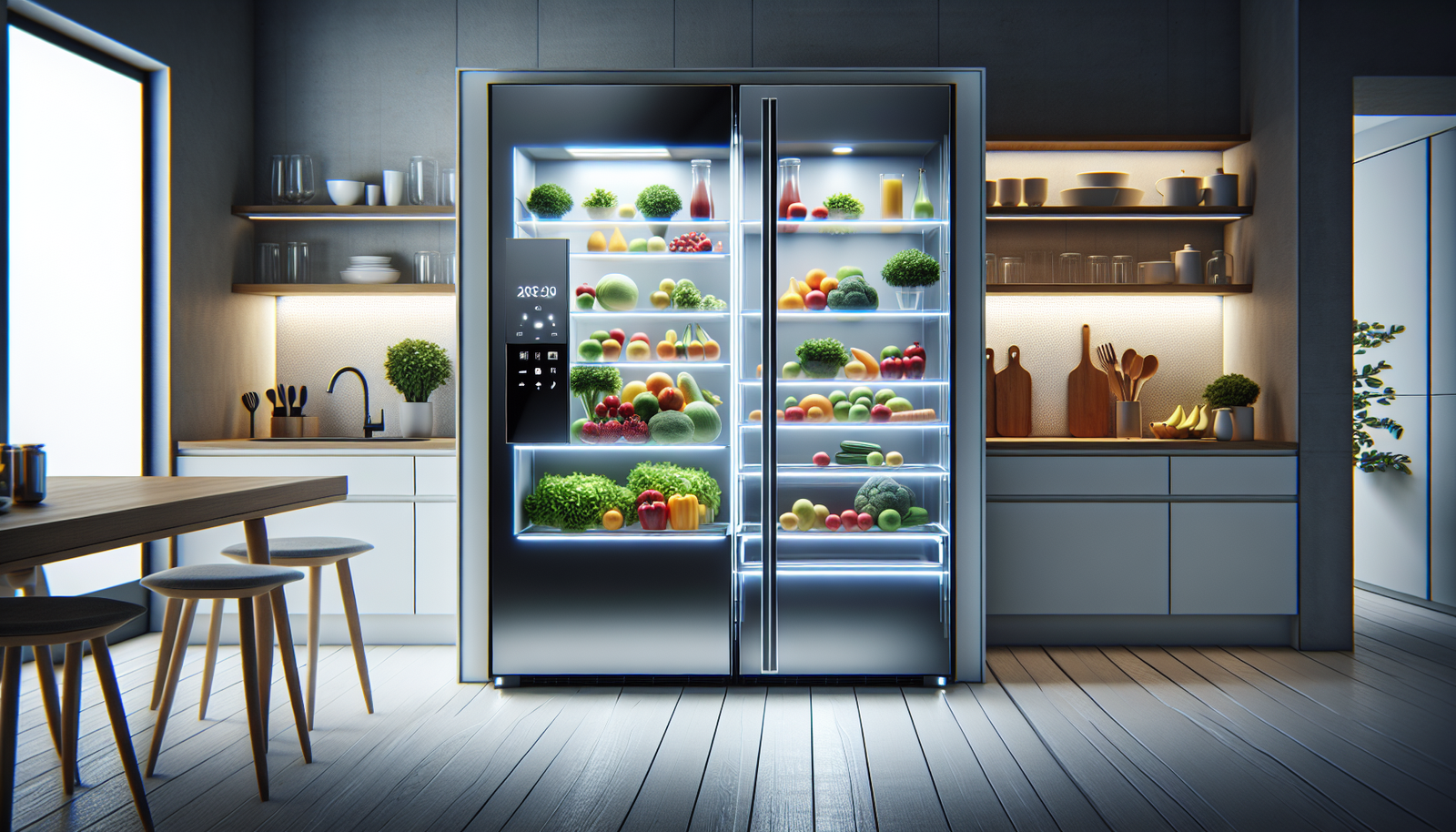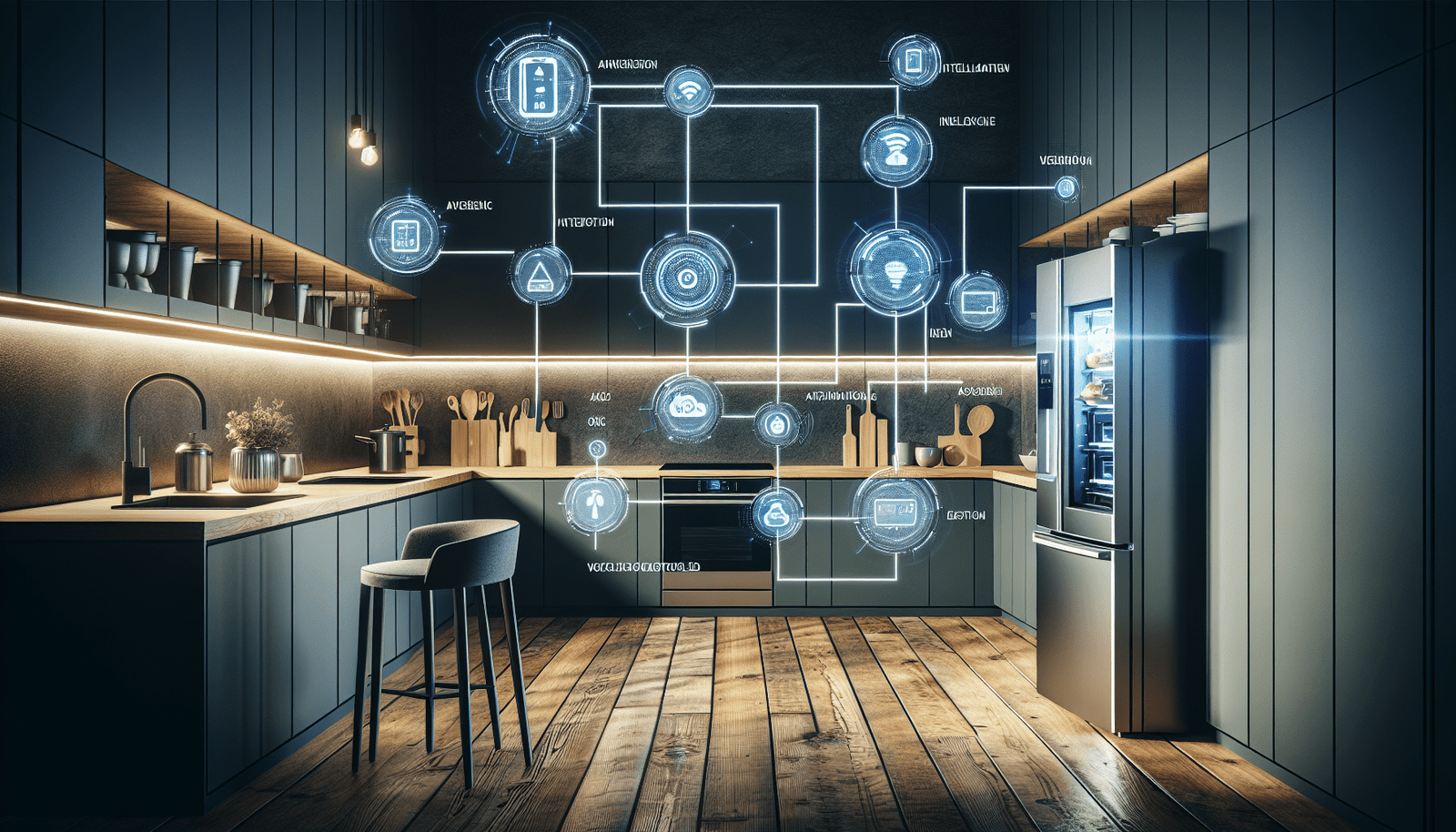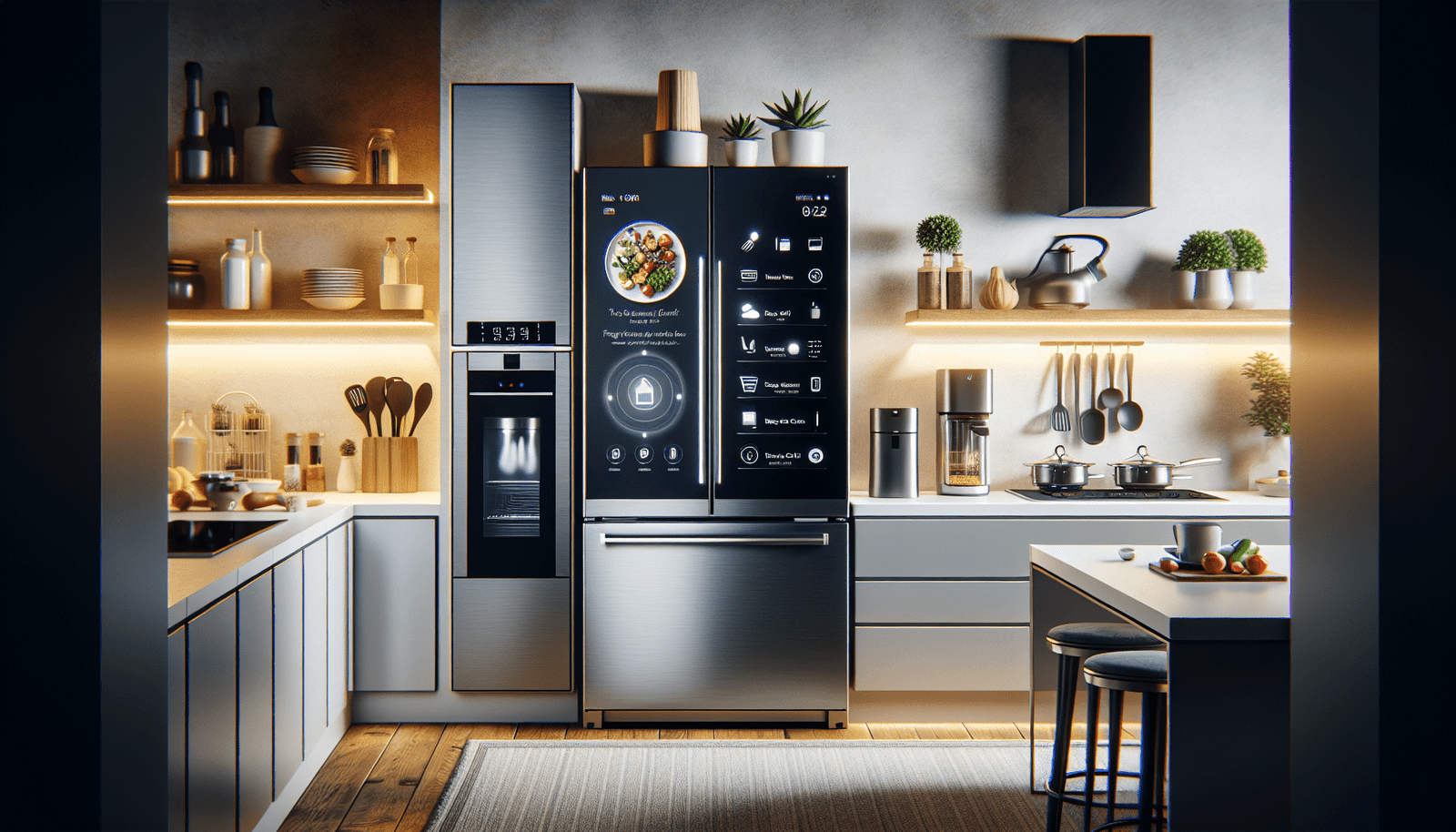The Benefits of Smart Food Storage Solutions for Freshness in a Smart Kitchen
Are you intrigued by the concept of a smart kitchen but aren’t quite sure how it can really benefit you, especially when it comes to keeping your food fresh? It’s fascinating to imagine an environment where technology seamlessly integrates into your daily culinary routine, enhancing food preservation among other things.
In a world where technological advancements continuously reshape our lives, the kitchen is no exception. With the emergence of smart kitchen devices, cooking and food storage have been transformed. This article delves into how smart food storage solutions can elevate your kitchen’s efficiency and your culinary experience, while maintaining your food’s freshness.
What Exactly is a Smart Kitchen?
Before jumping into smart food storage, let’s take a step back and understand what constitutes a smart kitchen. A smart kitchen is equipped with devices that automate or support various tasks through technology, often connecting to networks like Wi-Fi or Bluetooth for seamless communication. Imagine your refrigerator telling you which foods are nearing their expiration date or your oven preheating while you’re on your way home from work.
Smart kitchens integrate with smart home ecosystems and offer features aimed at improving your culinary tasks. These gadgets learn your preferences over time, making personalized suggestions, and even helping you keep grocery lists updated.
Why Invest in Smart Food Storage Solutions?
Keeping food fresh has always been a primary concern for households. Improper food storage not only leads to wastage but can also impact your health. Homemade meals could spoil quicker, resulting in an unpleasant eating experience or the risk of foodborne illnesses. Investing in smart food storage solutions addresses many of these issues by maintaining the right temperature, humidity, and environmental conditions for each type of food.
Smart food storage solutions provide more than just convenience; they offer a way to enhance food longevity and safety. These solutions adjust to your habits, reduce waste, and potentially save you money both from a financial perspective and in terms of time spent managing your kitchen.
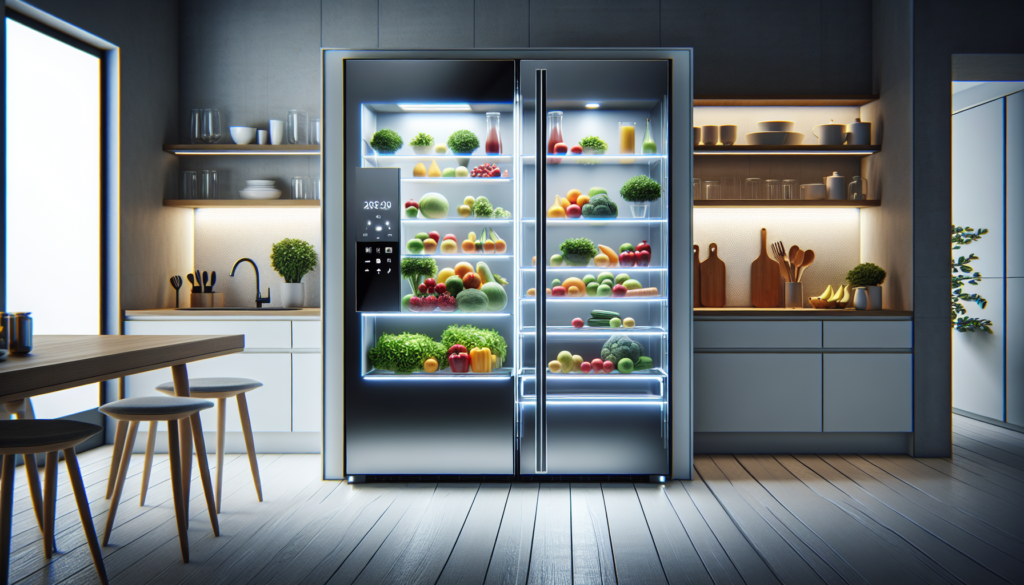
Key Features of Smart Food Storage Solutions
Temperature and Humidity Control
One of the foremost benefits of smart food storage is the ability to control temperature and humidity accurately. Traditional refrigerators often have a single cooling system, treating all food the same way. On the other hand, a smart refrigerator can adjust its settings to cater to different types of food. This ensures that your leafy greens remain crispy while your meats are kept at the optimal temperature to prevent spoilage.
Smart sensors measure and adjust the levels based on the food stored, alerting you if conditions deviate from optimal. This precision helps in reducing food wastage.
Integration with Other Smart Devices
Imagine a scenario where your refrigerator could communicate seamlessly with your other devices. Your smart fridge might suggest recipes based on what’s available inside it, while also factoring in the expiration dates. Integration allows for a streamlined cooking experience, where your fridge, stove, and devices like a sous-vide precision cooker work in tandem.
Automated Inventory Management
Keeping track of what you have at home can be challenging, especially after a busy day. Smart storage solutions automatically update an inventory list stored in your smartphone or tablet app. By scanning their contents, they can remind you what’s running low, what needs to be consumed soon, and even place a grocery order for you online. This functionality essentially acts as a virtual assistant, helping to streamline your grocery shopping and reduce impulsive buys.
How to Set Up a Smart Kitchen with Focus on Storage
Transforming your kitchen into a modern marvel starts by choosing smart storage solutions that fit your lifestyle. Start by evaluating the space available and the existing appliances you have. Here are a few steps to guide you in setting up:
Assess Your Needs and Space Constraints
The first step is evaluating what you really need. If you live alone or have a small family, you might not need an extremely large smart fridge. Consider your storage needs and assess the space available in your kitchen to accommodate the necessary appliances.
Research Smart Appliance Features
Not all smart appliances are built alike. Research the features of different brands and models to understand what aligns with your needs. For instance, some smart refrigerators offer more advanced humidity control settings, while others might have better integration capabilities with your smart home system.
Installation and Configuration
Once you’ve chosen your smart appliances, the next step involves installation and configuration. Most devices come with user manuals and guides—making setup a straightforward process. You’ll typically need to connect your new appliance to your home network, which is often done through an app on your smartphone.
Integration with Other Ecosystems
To fully maximize the potential of smart kitchens, integrate your appliances with existing smart home systems. Devices like Amazon Echo, Google Home, or Apple HomeKit manage kitchen appliances via voice commands, advancing the convenience factor even more.
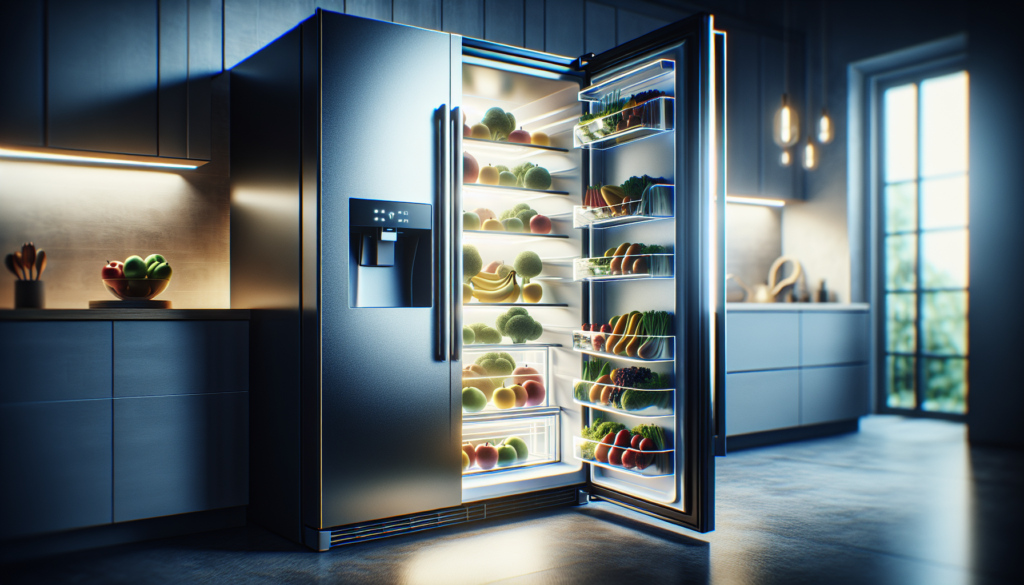
Smart Kitchen Devices for Food Storage
Smart Refrigerators
Smart refrigerators are at the heart of smart food storage solutions. They offer features like:
- Internal cameras to give you visual access to what’s inside.
- Energy management for efficient operation.
- Touchscreen interfaces with recipe guides and streaming capabilities.
Smart Pantry Solutions
While fridges handle perishables, smart pantry solutions manage your dry goods efficiently. Equipped with RFID and barcode scanning, smart pantries track inventory and suggest grocery lists based on consumption patterns.
Vacuum Sealers and Smart Containers
Preserving food efficiently also involves new-age vacuum sealers and smart containers that delay spoilage and alert you when items are about to expire. Smart scales connected to containers can also calculate nutritional information—ideal for those who are health-conscious and track their dietary intake.
Maintenance and Troubleshooting for Smart Storage Devices
Smart devices, like all electronic equipment, require regular maintenance to function optimally. Here are some general practices for keeping your devices in top shape:
Regular Cleaning and Upkeep
Ensure that all sensors, especially those inside refrigerators and cameras, are clean. Dust and food debris can interfere with their performance. Regularly clean both the inside and the outside, following the manufacturer’s guidelines.
Software Updates
Smart devices continuously evolve and improve. Manufacturers release firmware updates to introduce new features and fix known bugs. Keeping your software up-to-date is crucial in maintaining security and enhancing functionality.
Troubleshooting Common Issues
You may occasionally encounter issues with connectivity or app functionality. Most problems can be resolved through troubleshooting steps provided in user manuals. In case of persistent issues, customer support can be a helpful resource.
Trends in Smart Kitchen Technology
Smart technology in kitchens isn’t just about convenience; it’s paving the way for future innovations. Here’s what the horizon promises:
AI and Machine Learning
As AI advances, smart storage solutions become more intuitive. Your appliances could predict shopping patterns, suggest meal plans, and even create detailed nutritional profiles tailored to your dietary needs.
Enhanced Connectivity
With the rise of 5G technology, connectivity is bound to improve, boosting the speed and efficiency of device communication. The latency issues existing networks face will decrease, making it possible for more complex functionalities.
Sustainability and Energy Efficiency
Current trends in sustainability approach involve integrating renewable energy sources with smart devices. Solar energy use, alongside advanced energy-saving modes in smart devices, results in a notably reduced environmental footprint.
Blockchain for Food Safety
Adopting blockchain provides seamless traceability in food supply chains, enhancing food safety. When combined with smart food storage, consumers can gain real-time insights into their food’s journey—from farm to table.
Conclusion
The landscape of home kitchens is evolving rapidly, driven by technological innovations that are making our lives easier, healthier, and more sustainable. Smart food storage solutions do not just promise the efficient preservation of food but also redefine what a kitchen can offer you. From reducing wastage to ensuring energy efficiency, the smart kitchen is a harmony of convenience, functionality, and modern technology.
While the investment in smart kitchen technology may initially seem high, the long-term benefits—enhanced food safety, less wastage, and increased efficiency—justify the cost. The satisfaction of turning meal preparation into a seamless and high-tech process makes adopting smart food storage solutions an opportunity rather than a luxury. As you consider these advancements, envision how they can transform your approach to cooking, eating, and food management.
Disclosure: As an Amazon Associate, I earn from qualifying purchases.
